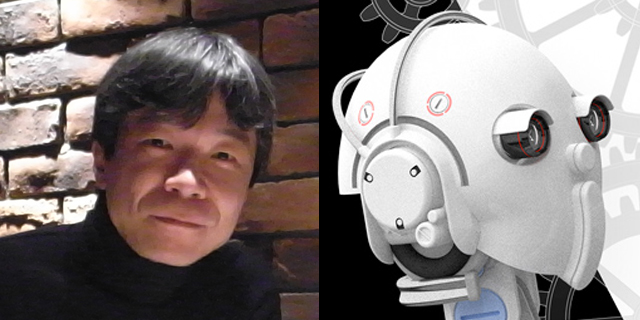Director's Corner
22 July 2010
 Barry Barish |
An animated ILC
The old adage that "a picture is worth a thousand words" nicely captures the concept that a complicated story can often more easily be described by a picture than some wordy text. Perhaps in these modern times, we could be improve this saying by saying, “an animation is worth more than a thousand pictures.” For communicating the International Linear Collider, we have created and use a variety of visual pictures of the ILC, however until now, we have never ventured into using computer animation for our communication needs. Today, we release our first ILC animation, which has been created by Mamoru Horiuchi (aka Rey.Hori) from Japan.
In just over one minute, Rey.Hori has visually told the story of the ILC with particles running through all the different subsystems, the beam pipes, superconducting accelerating cavities and finally into collision at the interaction region, where he even illustrates particles from collisions being tracked for researchers in a large particle detector. Although few details can be gleaned from such a visual short story, overall, it very nicely conveys what an operating ILC would be like.
Animation in some forms pre-date motion pictures and videos, but the use of animation has been developed to where it has become a commonplace form of communication as a result of those industries. Of course, early animation was created using hand-drawn images, each differing from the previous enough to give the illusion of motion when shown one after the other. Now, this same concept is carried out very flexibly and efficiently by use of computer animation, the modern mechanism for creating and displaying animated images.
The art of animation has become extremely sophisticated through its major applications to modern filmmaking. Using motion capture, actions of human or animals are recorded and used to realistically animate digital character models in two dimensions or even three dimensions. Performance capture can even include detailed facial motion, fingers and real-life expressions. The reality and popularity of such created characters, images and action are well illustrated in a blockbuster movie like the recent "Avatar" by James Cameron.
Rey.Hori, our animator, is not an artist by background, but rather a mechanical engineer. Our application is not art, but communicating sophisticated technical concepts. Rey.Hori developed his skills in animation by first making three dimensional computer graphics as a hobby, and then becoming a freelance professional. He notes that he is more friendly with machines or mechanics than 'normal' illustrators, enabling him to use his animation skills for technical communication applications.
The ILC animated movie is the longest movie he has ever made. For the last decade, he has mostly created still images and artworks, and a few short movies per year. Most of them have been to illustrate construction and/or functions of electric components (e.g. connectors, switches, etc.). He has also developed some prototype user interfaces for products by Adobe Flash using Action Script.
He began work on the ILC movie almost one year ago by rendering thousands of high-definition images. His methodology is very similar to rendering with computer-aided design (CAD) programs of the components of ILC, and he uses the commercial Japanese software 'Shade' on his Mac. He says he first makes line-drawings — outlines and/or cross sections of the parts for modeling on Shade using Adobe Illustrator or 2D CAD software for the precision objects. He then imports them into Shade and makes them into 3D images of the tunnels, cryomodules, cavities and detectors. In fact, his ILC movie uses illustrations he made for KEK's various ILC leaflets and illustrations under the guidance of Hitoshi Hayano (Accelerator Research Division, KEK).
You may wonder where the name Rey.Hori came from? We asked him and he said that he started doing computer graphics jobs as a professional during his engineer days, but at the time, wanted to keep it hidden from the company he worked for. So, he created his illustrator name, Hori coming from his family name Horiuchi and Rey from the Japanese Kanji-character meaning 'waterway' or 'channel.'
It is interesting to contemplate the exciting ways animation will evolve in the future and how we might use them for our communications needs. The technology is no longer being just driven by its cinema applications, and in fact now perhaps much of the creativity and advances are for the multibillion dollar computer game industry. We can project technical advances that will greatly enhance the tool box for animators. For example, we can anticipate having virtual reality systems in our living rooms with holographic 3D displays and maybe even interactive brainwave software that responds and modifies the images or games to our liking?
For our purposes for ILC or other such technical topics, we have different communication challenges, but there is little doubt that we should make the best use of these new tools. We should never underestimate the power of images in transmitting our story! In my opinion, with this first animation, we are taking a small but crucial first step toward employing a powerful new way to tell our complex and challenging story.
-- Barry Barish
